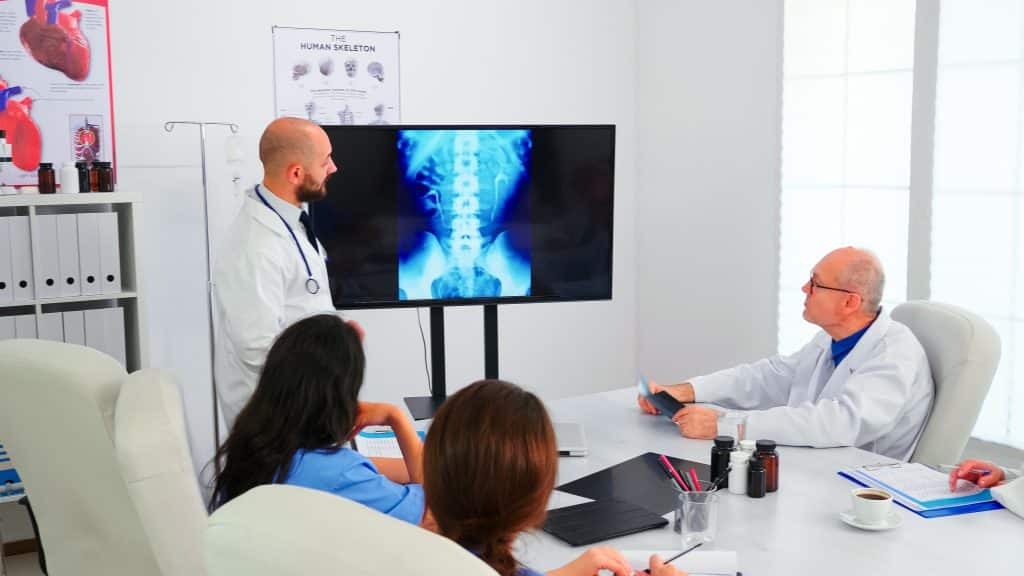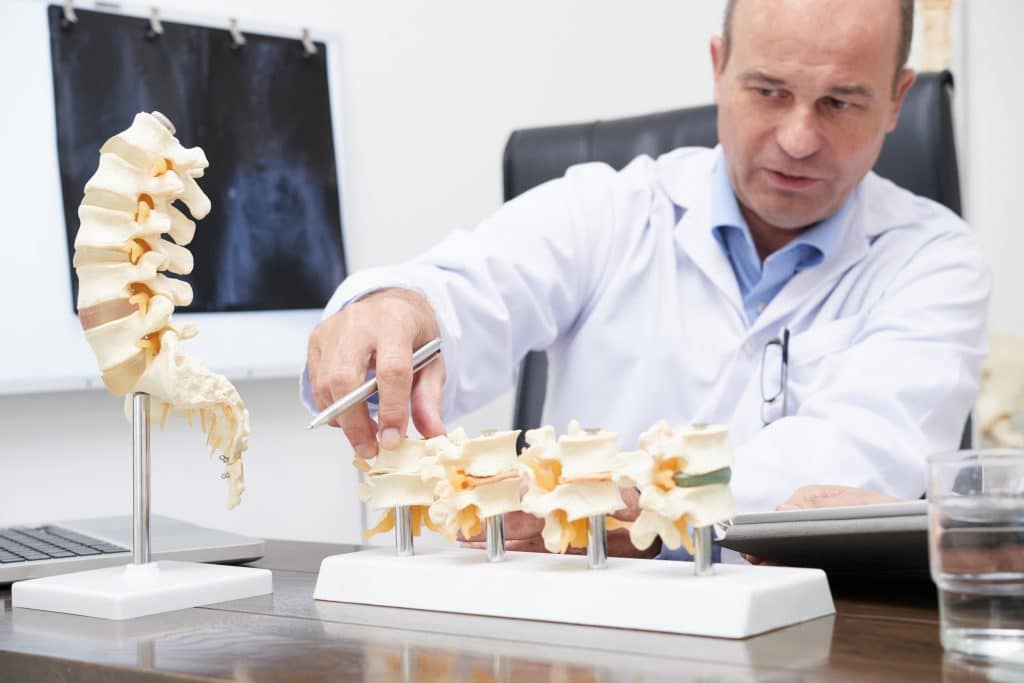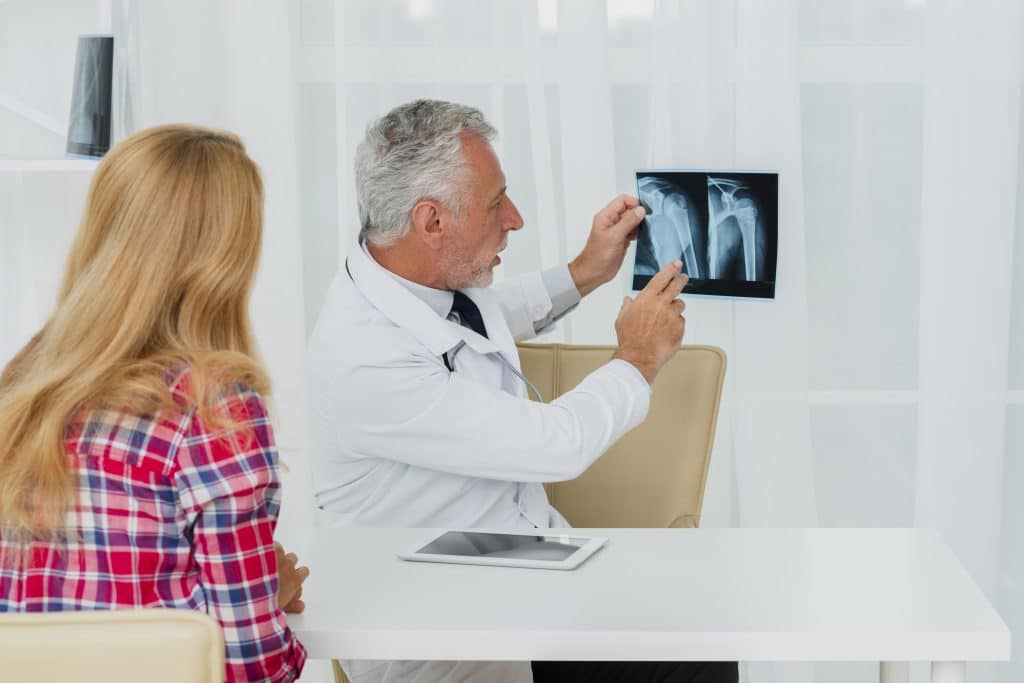Bone Density Clinic
Get an Accurate Bone Density Imaging at Valence Medical Imaging
Mammography Appointment Guide
What Is Bone Density Imaging?
You might have heard about the benefits of having good bone density. But are you aware of bone density imaging? The advancement of medical science methodologies has helped determine issues such as osteoporosis through this effective imaging technique.
Bone densitometry, also known as Dual-Energy X-ray Absorptiometry (DEXA), is a scan that uses a small amount of ionizing radiation to provide an image of the inside of the bone and aid in assessing bone loss. The standard procedure of DEXA is quick, easy, and noninvasive for analyzing bone mineral density (BMD), diagnosing osteoporosis, and identifying the possibility of developing osteoporotic fractures.


Moreover, the radiation produced by DEXA is modest and less than a day’s exposure to background radiation, making it the most standardized procedure. The DEXA scan is more accurate and sensitive since it can identify 1% bone loss, while the two X-ray beams used in this scan are focused on the bones.
Why Do You Need Bone Density Imaging?
Osteoporosis is a disorder where the bones thin out, become more brittle, and undergo structural changes that make them more susceptible to break.
Bone density imaging aids in identifying the reason for bone loss and monitors the effectiveness of osteoporosis treatment. It also considers the possibility of fractures. Aging, malnutrition, body weight, a family history of osteoporotic fractures, and an unhealthy lifestyle are all factors that contribute to the loss of bone mass. Before starting the patient’s therapy, a doctor or specialist considers all these factors.
Women over the age of 40 and males over the age of 60 are often advised to get a DEXA scan at least once a year. Women have bone loss at an earlier age than males due to the less drastic decline in estrogen resulting from menopause. The scan can assist in determining the likelihood of a future fracture and weak or brittle bone.
Schedule Your Bone Density Imaging Appointment Today
*Fields marked with an asterisk are mandatory.
Types of Bone Density Imaging
Bone density test typically involves analysis of the spine, hip, and forearm bones during the examination. When you have osteoporosis, these bones are most susceptible to breaking. The procedure requires less than 15 minutes and can be divided into two broad categories.
- Central DXA
The central DXA scan or the Dual Energy X-ray Absorptiometry examines the spine and hip bones. It usually tends to be more precise. The price is likewise higher. The patient lies down on a cushioned platform during the test while fully dressed.
Low-dose X-rays are transmitted through your body by a mechanical arm moving over you. An image of your skeleton is created based on how much the X-rays alter after going through your bones. This examination takes around 10 minutes.
- Peripheral Test
The imaging gauges the strength of your wrist, finger, and heel. Due to the absence of a spine or hip examination, the test is less comprehensive. Thanks to its portability, you can take the equipment to pharmacies and health fairs. Many people who might not be able to get the central DXA test can now get the test as a result.
Peripheral tests are another method of screening people, allowing those with a higher risk of osteoporosis to undergo additional testing. They are suitable for individuals who cannot receive central DXA due to weight restrictions.
Benefits of a Bone Density Imaging at Valence Medical Imaging
Bone density scan is an important method for identifying bone-related health issues such as osteoporosis and determining one’s risk of getting them. Those over the age of 50 or those who have a higher chance of getting a bone problem are frequently advised to get the imaging from the best labs. Here are some additional advantages of undergoing bone density imaging at Valence Medical Imaging.
- To Recognise Bone Issues
Unlike standard X-rays, DEXA scans may detect minute changes in bone density, allowing for the early diagnosis of osteoporosis and lowering the risk of future fractures and disability.
- Low-Risk Method
Compared to traditional X-rays, DEXA scans use lower radiation, significantly reducing health hazards. Also, it is a fast and non-invasive process with no downtime.
- Correct Treatment
Undoubtedly, bone density imaging is an easy and reliable way to identify bone-related health issues. It enables medical professionals to accurately monitor the disease and decide on the best course of therapy based on the scan results, preventing further issues.
What to Expect?
The skilled practitioners at Valency Medical Imaging use a DEXA bone densitometry device to undertake a bone density scan. It does not hurt and usually only takes ten minutes to finish. A bone densitometry method does not need reclining in an enclosed tube, unlike an MRI or CT scan, and no preparation instructions.
Instead, you will remain motionless on an X-ray table when the scanner moves over your body. The scan usually runs on the following body parts:
- lower backbones (lumbar vertebrae),
- the slender thighbone (femur) neck close to the hip joint,
- bones on the forearm.
The scan produces images of the inside of the body, notably in the area of the hips and lower spine, quantifying bone mass and strength. The scanned images will be ready for the certified radiologic technologist to evaluate your findings and write a report. Your doctor will typically receive the results within 24 to 48 hours following the procedure.
A test obtained at your heel typically is not as accurate a predictor of fracture risk as a measurement done at your spine or hip since bone density might vary from one point in your body to another. To confirm your diagnosis, your doctor may advise a follow-up scan of your spine or hip if your test on a peripheral device is positive.
Things to Remember During Bone Density Imaging

The DEXA scan uses X-rays to determine how thick or dense your bones are. The amount of calcium and minerals in a particular area of your bone is measured using X-rays. If you have adequate minerals in your bones, your bones are more robust, thick, and unlikely to fracture. However, your risk of fracturing a bone in a fall increases due to lesser mineral content.
Before the Procedure
- If you are pregnant or suspect you could be pregnant, ensure to tell your healthcare provider or radiologist (a medical expert highly educated in radiation procedures).
- Put on comfortable, relaxed clothing. Wear nothing with buckles, buttons, or zippers made of metal. Test results may be tampered by metal.
During the Procedure
- You could be requested to remove any jewelry, eyeglasses, or clothes that could obstruct the imaging.
- Your legs are placed on a cushioned box as you are made to lay on a table by the radiologist or medical assistant. Moreover, they could insert your foot into a device to move your hip inward.
- Follow the instructions and remain still while the scanning is in process. Additionally, you might need to hold your breath briefly.
After the Procedure
- Normally, the imaging takes 15 to 20 minutes. Your healthcare provider will contact you after reviewing your findings. A T-score and a Z-score will be displayed. The T-score illustrates how your peak bone density compares to that recommended for your gender.
- The Z-score illustrates how your bone density stacks up against others of similar age, gender, and ethnicity.
Get Accurate Bone Density Imaging Results at Valence Medical Imaging
Modern medicine has developed significant tests and screenings that can serve as a road map, but it has not yet invented a crystal ball that can foretell future health issues. Patients can use these maps to learn which disorders are most likely to pose risks to their health.
Valence Medical Imaging possesses trusted and independent imaging accreditation to conduct bone density tests. We have cutting-edge imaging facilities and leading digital results with the highest patient protocols across Canada, including Toronto, Brampton, Bramalea, Frenchgate, Niagara Falls, and more. Book an appointment today!

